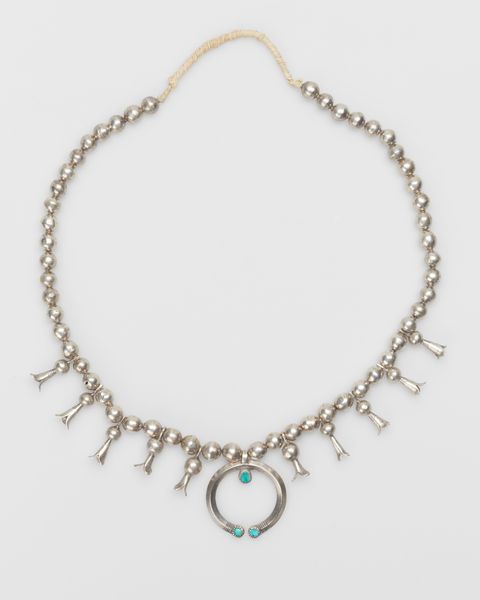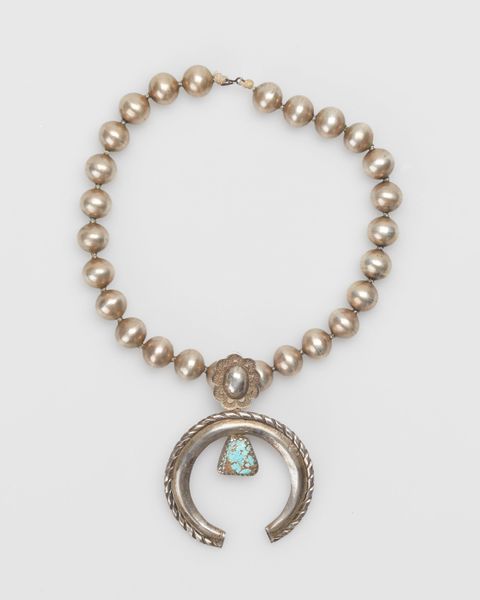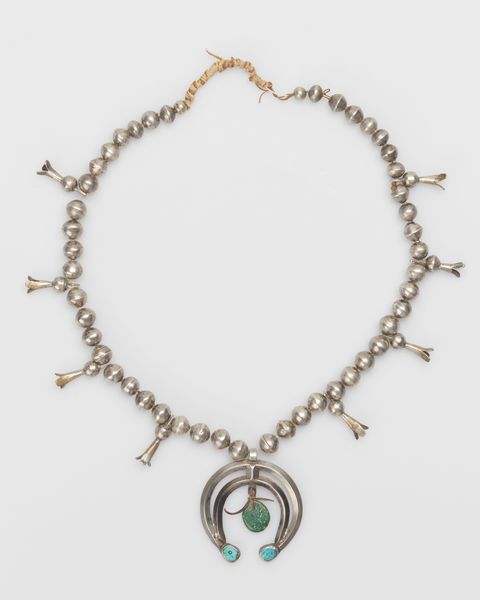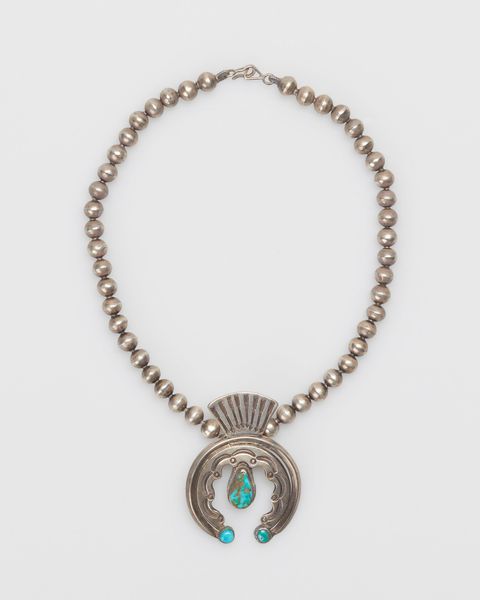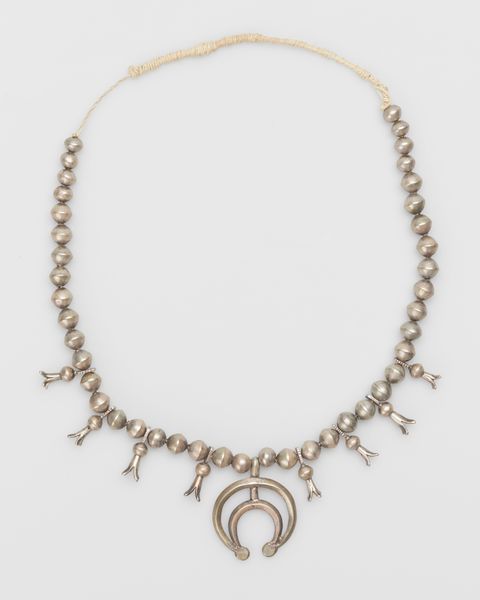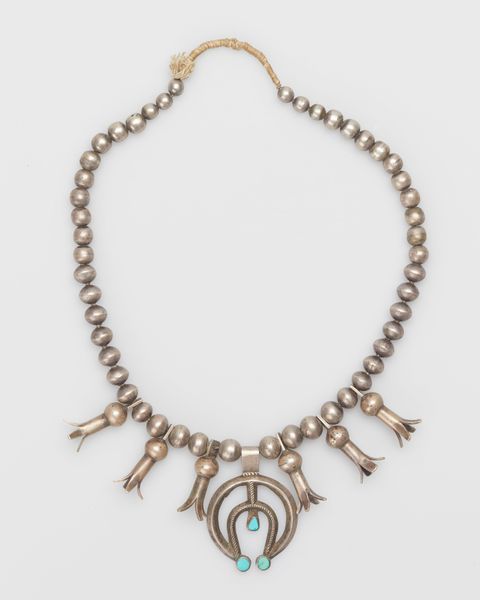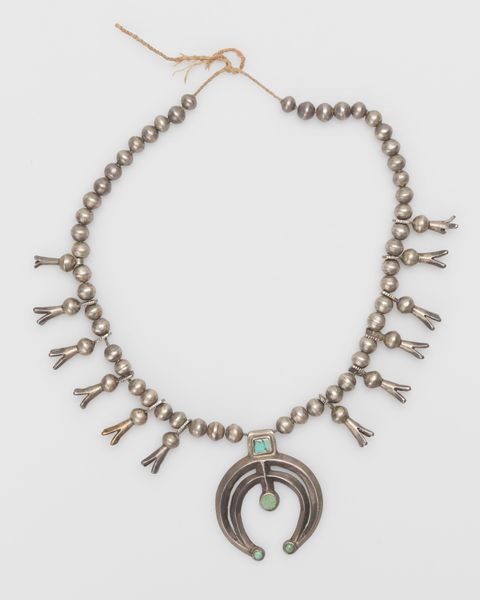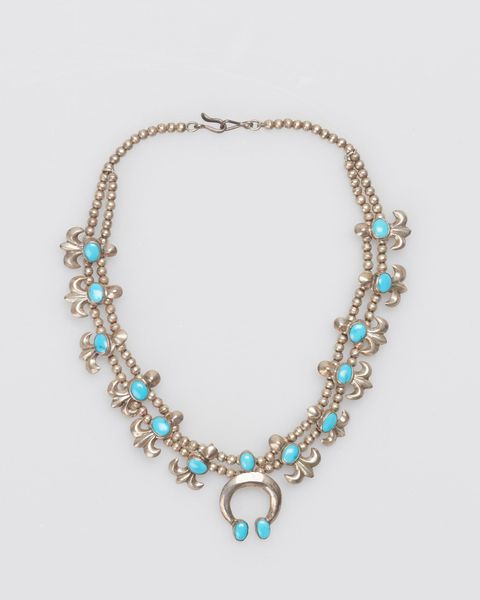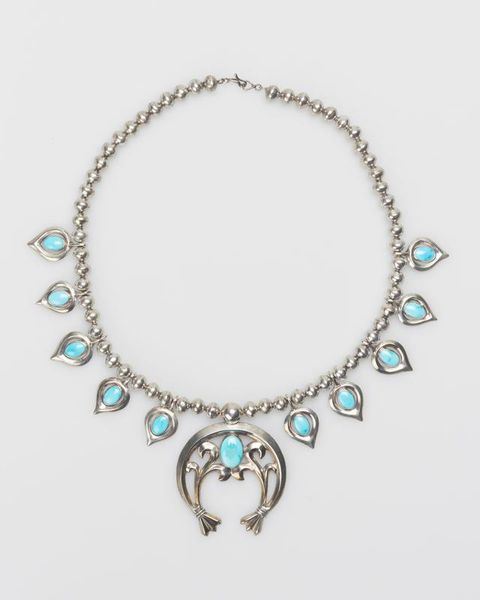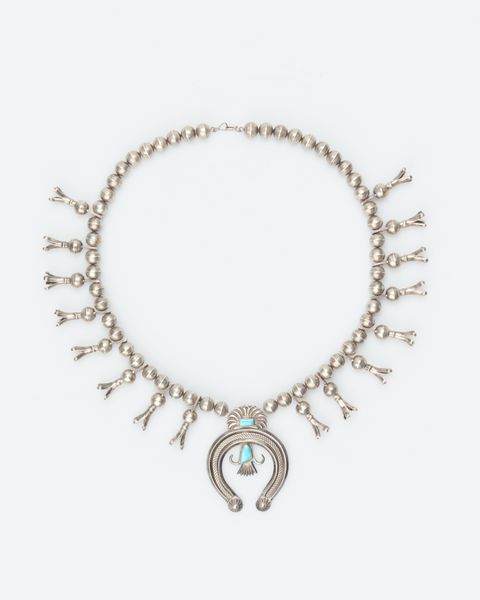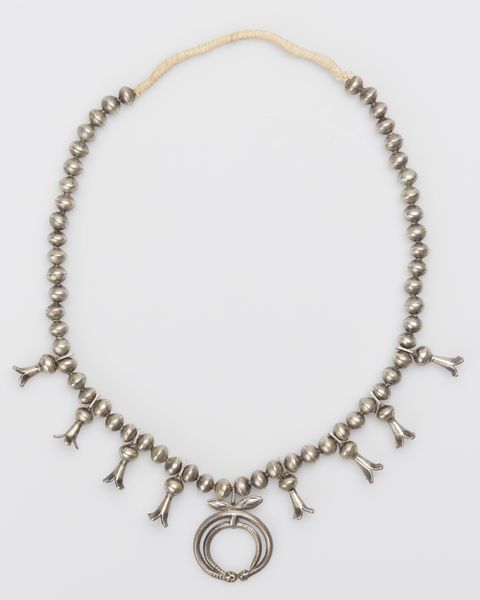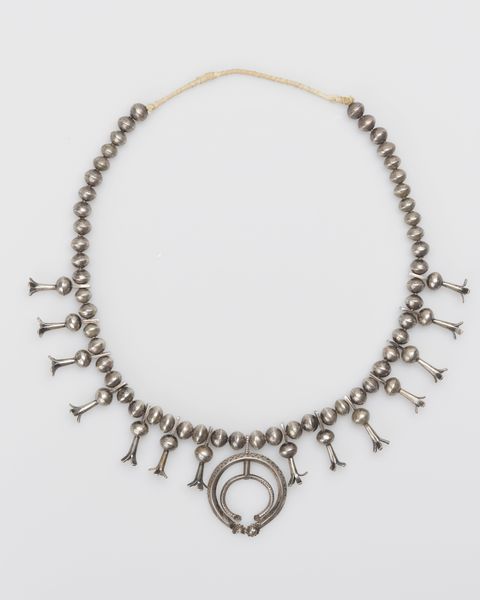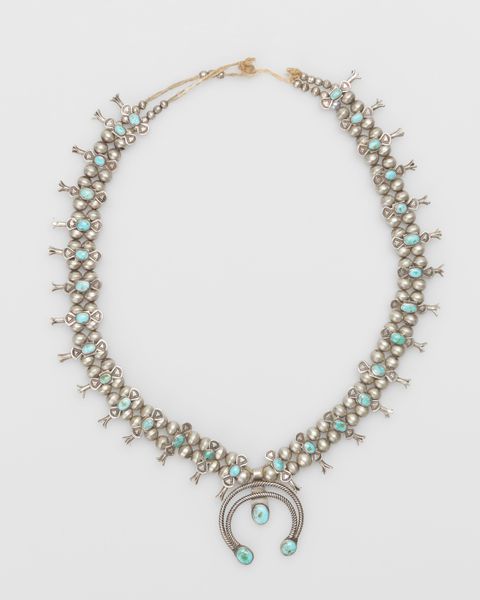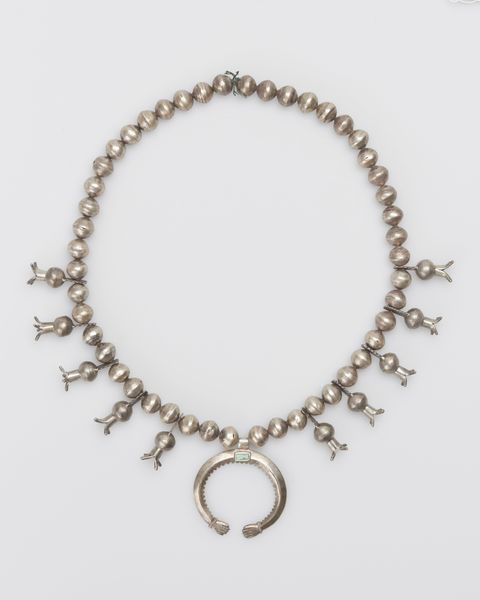
silver, metal
#
silver
#
metal
#
indigenous-americas
Copyright: Public Domain
Curator: Welcome. Today we're observing a silver necklace crafted by a Navajo artist, likely between the 1940s and 1950s. It is part of the decorative arts collection here at the Minneapolis Institute of Art. Editor: You know, the first thing that strikes me is its serene simplicity. The repeating silver beads are almost meditative, like counting your blessings or the phases of the moon. Curator: That’s interesting, particularly given the historical context. During that era, Navajo silversmithing evolved both as an art form and as a means of economic and cultural resilience, a visible expression of identity amid significant sociopolitical challenges. Editor: Absolutely! It feels grounding, rooted in tradition, but not weighed down by it. I love how each little “blossom” springing from the beaded strand carries this gentle rebellious spirit. Like little seeds ready to take flight. Curator: The blossoms you mention are technically known as "squash blossoms," a motif deeply ingrained in Navajo art, representing abundance, fertility, and, by some accounts, even the matrilineal structure of Navajo society. Note the Naja symbol in the pendant; its crescent shape and directional star motifs indicate divine protection. Editor: I adore the tiny turquoise center stone! It pulls you in. What would you say is the relationship between the spiritual aspect of the work and its commercial intention at the time? Curator: Navajo jewelry certainly filled an economic need. However, reducing it purely to commerce ignores the intentionality of imbuing adornment with cultural meaning. The very act of creation became a powerful statement. It's why understanding power dynamics, historical context and symbolism in cultural art becomes critical to understand the larger framework of this particular artwork. Editor: Yes! So beautifully said. Looking at this necklace feels like touching a piece of history, not just of the Navajo nation, but of human resilience and artistic expression. It is absolutely gorgeous. Curator: I agree. It stands as a potent symbol, reminding us how art and identity intertwine, particularly in moments of cultural struggle and resilience. Editor: Definitely something to wear when you need a reminder of your own inner strength and connection to something bigger. Thanks!
Comments
minneapolisinstituteofart almost 2 years ago
⋮
Necklaces are one of the most distinctive types of Southwest jewelry. Modified from an earlier design of carved turquoise beads, the classic form is made of cast or hammered silver. Round beads are interspersed with squash blossom ones, a shape adapted from a Spanish pomegranate decorative motif. The crescent-shaped pendant, or naja, is purely an aesthetic element, to provide a visual focus for each necklace. Over time, the original form became ever more elaborate, with additional turquoise added at crucial design points for greater ornamentation. The creativity of the artist is expressed through their combination of all these varied elements into a beautiful and harmonious whole.
Join the conversation
Join millions of artists and users on Artera today and experience the ultimate creative platform.
